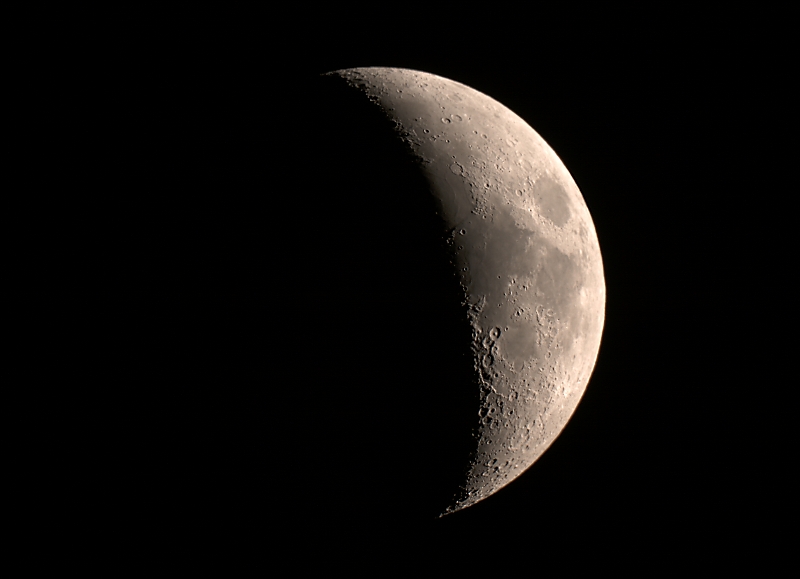 |
4 Day Old Moon
 |
Copyright 2004 Hap Griffin
A 32% illuminated moon. The line between daylight and darkness on the moon is called the "terminator". The shadows cast by the setting sun cause the geological features along the terminator to stand out. The large relatively smooth areas are called "seas" or "maria" from an ancient time when these areas were actually thought to be water from their smooth appearance. Actually, these areas have been found to be lava flows from an era when the moon was volcanically active.
The distinct circular area near the right edge is Mare Crisium or "Sea of Crisis". It stands out when viewing the moon naked eye. The half circular area roughly one-third of the way down the terminator is Mare Serenitatis, or "Sea of Serenity", and just below that is Mare Tranquillitatis, more famously known as the "Sea of Tranquility". In 1969, NASA's Apollo 11 mission with commander Neil Armstrong and pilot Buzz Aldrin made the first manned landing on the moon. Their landing spot is almost exactly at the midpoint of the terminator in this shot.
The prominent crater with the bright central peak is Theophilus, seen in a close-up picture here.
Date/Location:
September 19, 2004 Griffin/Hunter
Observatory Bethune, SC
Instrument: Meade 10" LX-200
Focal Ratio: Approx. f4 (utilizing Lumicon Giant Easy Guider focal reducer)
Guiding: None
Conditions: Visually clear
Weather: 63 F, calm
Camera: Canon 10D Digital SLR
Exposure: 1 x 1/30th second @ ISO 100
Filters: None
Processing: Adaptive Richardson-Lucy deconvolution, scaling
and JPEG conversion in ImagesPlus.